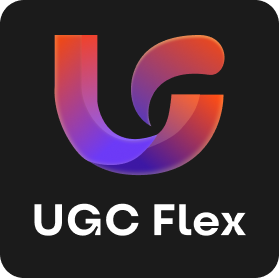
The digital content creation market continues to experience unprecedented growth, with projections indicating an expansion from $27.1 billion in 2023 to a staggering $90.4 billion by 2033. This rapid evolution is being powered by AI-driven SEO copywriting and video marketing trends that are reshaping how brands connect with their audiences.
Key Takeaways
- The digital content creation market is growing at a 12.8% CAGR over the next decade
- Video content dominates with 40% market share and delivers highest ROI
- 85% of marketers believe generative AI in content will transform creation processes
- High-quality content published less frequently outperforms quantity-focused approaches
- Personalized marketing strategies are cited by 94% of marketers as boosting sales
The Evolving Digital Content Creation Landscape
The digital content creation industry has transformed into a powerful economic force, reaching $27.1 billion in 2023. Growth projections paint an impressive trajectory, with the market expected to hit $30.6 billion in 2024, $34.5 billion in 2025, and $49.5 billion by 2028. Looking further ahead, analysts predict the market will nearly triple its current size to approximately $90.4 billion by 2033.
This remarkable expansion represents a compound annual growth rate of 12.8% over the next decade, signaling the continued importance of content marketing trends in the digital economy. By 2033, the distribution of market value will be notably split between tools generating $67.62 billion and services reaching $22.78 billion. This growth reflects how AI in content creation and other digital innovations are reshaping how businesses connect with their audiences.
Video Dominance and Content Format Effectiveness
Video marketing continues to cement its position as the most engaging content format, claiming a dominant 40% market share due to superior consumer engagement metrics. Short-form video content is projected to deliver the highest ROI on social media platforms, with 21% of marketers citing it as providing the best returns in 2025. These video marketing trends 2025 highlight the growing importance of concise, visual storytelling in capturing audience attention.
Despite video’s rise, traditional content formats maintain their relevance. Blogs remain a crucial component of content strategy, considered the most effective content type by 56% of marketers according to HubSpot’s 2022 research. The average blog post length was 1,416 words in 2023, indicating that comprehensive written content still resonates with audiences. Visual elements significantly boost blog performance, with posts containing images receiving 94% more views than text-only counterparts.
Silent video marketing is gaining traction as users increasingly consume content in public settings without audio. Incorporating websites with blogs has proven tremendously valuable for search visibility, increasing search engine rankings by an impressive 434%. These statistics demonstrate that a balanced approach to content formats, combining video, written, and visual elements, provides the most comprehensive strategy for sustainable content creation.
AI Revolution in Content Marketing
The integration of AI in content marketing has reached a tipping point, with 85% of marketers believing generative AI will fundamentally transform content creation in 2024. This prediction is backed by current adoption rates, as 64% of marketers already use AI for content production, primarily focusing on social media posts and email communications. The impact on productivity has been substantial, with 86% of marketers reporting that AI saves them at least one hour on creative tasks.
The business case for AI automation in content production is becoming increasingly clear, with 68% of companies reporting increased content marketing ROI following AI implementation. Beyond efficiency gains, AI tools are revolutionizing personalization capabilities. An overwhelming 94% of marketers report that personalized content directly boosts sales, making AI-powered personalization a critical competitive advantage.
The future of content marketing is being shaped by AI’s ability to analyze vast datasets, identify audience preferences, and generate tailored content at scale. This technology enables marketers to deliver more relevant messaging while reducing production time and costs. As AI tools continue to advance, we can expect further integration of automated processes throughout the content creation lifecycle, from ideation and research to optimization and distribution.
Content Marketing ROI and Strategic Approaches
Content marketing continues to prove its value as a revenue driver, with 83% of marketers citing it as the most effective approach for demand generation. The benefits extend beyond acquisition, as 63% of content marketers report that their efforts build meaningful customer loyalty. In 2024, 14% of businesses identified content marketing as delivering their highest ROI among all marketing activities.
Quality consistently trumps quantity in content strategy, with 83% of marketers believing that high-quality content published less frequently outperforms lower quality content published more often. This quality-focused approach aligns with subscription-based content platforms that prioritize premium offerings over volume. When it comes to specific content types, 53% of marketers prioritize blogging as their top content marketing strategy.
SEO considerations remain paramount in content development, with 45% of content creators adding related keywords to improve blog rankings. This demonstrates how SEO copywriting continues to serve as the foundation for discoverable content. The most successful organizations are taking strategic approaches that balance quality, search optimization, and audience needs rather than pursuing higher publication volume for its own sake.
Global Creator Distribution and Audience Engagement
The global content creation ecosystem shows fascinating geographic patterns, with Brazil leading the way with approximately 106 million digital creators. The United States follows with 86 million creators, while other significant markets include Germany (19 million), Japan (18.5 million), South Korea (17.5 million), Spain (17 million), the UK (16.6 million), and France (16.5 million). This widespread distribution highlights the global nature of digital content creation.
Content repurposing has become a standard practice for efficient resource utilization, with 82% of creators adapting their content for social media platforms. The most effective types of social media content tap into universal human responses: humor (80%), interactive content (77%), and brand values-aligned content (63%). These engagement patterns reflect how immersive media trends are shaping audience expectations for more interactive and authentic experiences.
Audience reception data reveals positive sentiment toward brand content, with 60% of people enjoying reading useful information from brands. More significantly, 82% of customers report feeling more positive about businesses after consuming their custom content. This explains why 47% of marketers credit thorough audience research as the critical factor in their content marketing success. Understanding audience preferences, behaviors, and needs continues to be the foundation for effective content strategy in the digital age.
